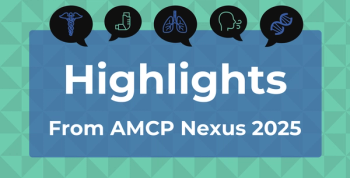
The Power of Patient Engagement in Insurance, Decision-Making: Kimberly Westrich, MA
Kimberly Westrich, MA, discusses how patient engagement can revolutionize health care decision-making and break down barriers to accessing necessary medicines and care.
By collaborating with patients from the very start and respecting their unique perspectives, decision-makers can create a health care environment that prioritizes real-world needs and delivers better results for everyone, says Kimberly Westrich, MA, chief strategy officer, National Pharmaceutical Council.
Using an airport acronym, "IAD-EVE," Westrich shares how good patient engagement includes interaction at all stages of the decision-making process in order to bring patient experiences, values, and expertise to the forefront of health care.
This transcript has been lightly edited; captions were auto-generated.
Transcript
What does good patient engagement in decision-making look like?
Too often, patients are finding that their health insurance just isn't working for them, especially when it comes to accessing the medicines and the care that they need. Currently, coverage and formulary decisions that health care payers make don't always reflect real-world patient experiences. For example, different treatments don't work the same for every patient. There can be significant heterogeneity, which means differences in how patients respond clinically and in patient preferences, and when formularies and coverage decisions don't account for these patient differences, then patients can face barriers to appropriate care, and that's why engaging patients in health care decision-making is so important.
If we started with the patient experience in mind and walked backwards, we would make many different decisions.
Good patient engagement is an interaction between the patient and the researcher or the patient and the decision maker. It's not something that is done to the patient. It's something that is done with the patient. It's co-created with the patient, and this includes meeting patients where they are and meaningfully capturing their priorities, preferences, and needs. You don't want to just bring the patient in at the end of a research project or at the end of a decision-making process. Ideal patient engagement has the patient involved throughout the process. For example, if it's a survey, you don't want to just give the patient the survey. You want the patient to help design the survey to make sure that the survey is asking the right questions, and this 'at all stages' part also includes addressing and removing any barriers to patients being able to participate in the process. This might be compensating the patient or accommodating their schedules, things like that. We're not just going to bring the patient into the research or the discussion. Get some context from them, frame the decision around it, but the input from the patient actually guides the decision.
When we combine all of these elements, interactive at all stages, guiding the decision-making, then we end up recognizing the specific experiences, values, and expertise that a patient can bring to the decision-making process. That's what good patient engagement and decision-making can look like.
Newsletter
Stay ahead of policy, cost, and value—subscribe to AJMC for expert insights at the intersection of clinical care and health economics.













































